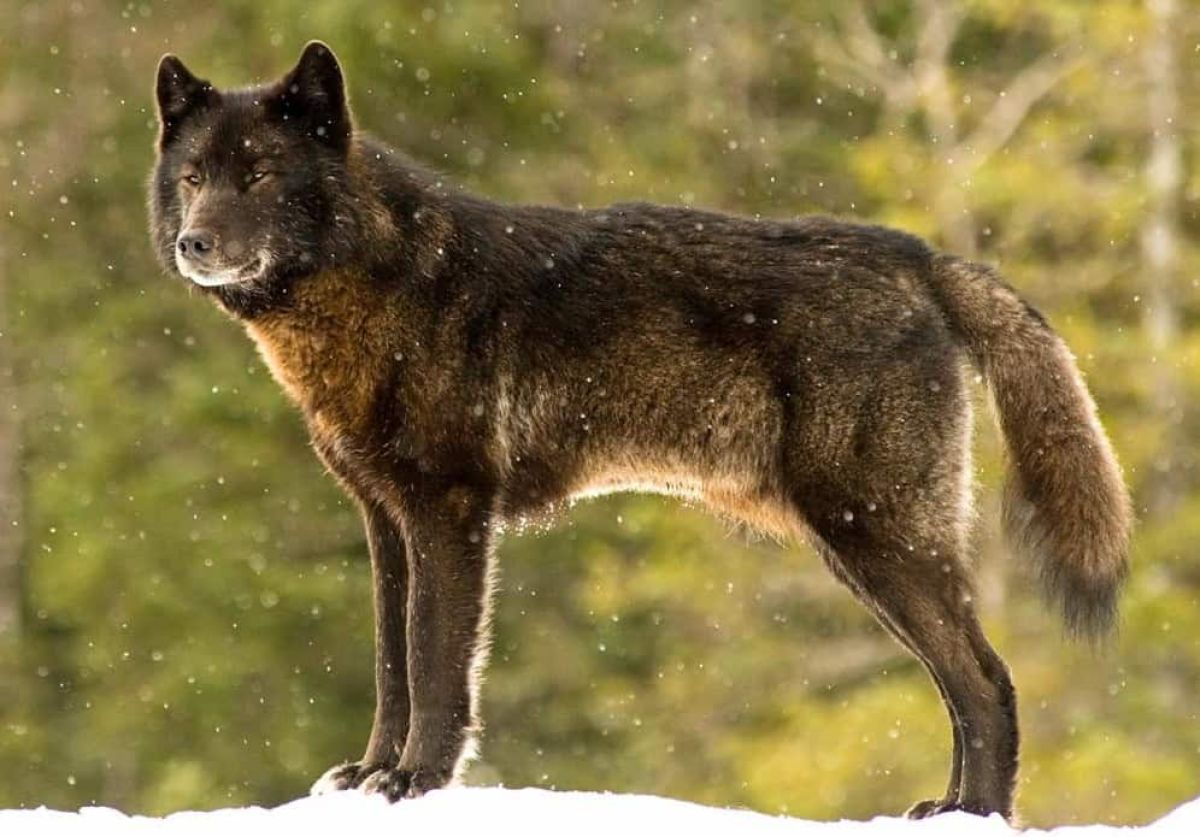The Tragic Story of Romeo: A Wolf’s Journey in Juneau, Alaska

In December 2003, the tranquil landscape of Mendenhall Glacier Recreation Area in suburban Juneau, Alaska, was graced by the unlikely presence of a young wolf. This was no ordinary wolf; he belonged to the Alexander Archipelago subspecies, one of the rarest forms of the gray wolf. Vulnerable to myriad threats including illegal hunting, trapping, and habitat destruction due to logging, this young wolf had likely become the last survivor of a pack that had fallen victim to human-caused mortality. It was here, on the cusp of the pristine wilderness, that his story would unfold—one filled with joy, companionship, and ultimately, heartbreak.
A Friendly Wolf
Unlike most wild wolves, known for their inherent shyness and avoidance of human interaction, this wolf chose a different path. Perhaps orphaned and yearning for the family he lost, he found solace in the company of humans and their dogs. As the lakes of Juneau froze over, he became a familiar sight, playing joyfully on the icy surface of the lake with a local yellow Labrador named Dakotah. Captivated by his spirit and simple joys, the locals affectionately named him “Romeo.”
Romeo quickly formed deep connections with the residents of Juneau, particularly with locals like Harry Robinson and his dog, Brittain. Their long hikes in the snow-capped landscape fostered a bond that transcended the boundaries of species. Photographer John Hyde immortalized their adventures through stunning winter snapshots, capturing the essence of this wild creature who became a beloved figure in the community.
A Long Friendship
Every spring, as the frozen lake melted, the reality of Romeo’s wild instincts became evident. He would disappear into the wilderness, finding his way below the Mendenhall Glacier, living independently until the lakes solidified once more in the fall. For six consecutive years, this solitary yet social wolf seamlessly bridged the gap between wildlife and human experience. His playful demeanor and striking presence became a symbol of coexistence in a rapidly urbanizing world.
An Illegal Killing
However, the turning of the leaves in the fall of 2009 brought a devastating change. Romeo returned, eager to reunite with his human friends, particularly Harry and Brittain. Yet, on September 18, he vanished without a trace after their hike together. An extensive investigation into his disappearance culminated in the heartbreaking discovery that Romeo had been illegally shot by poachers. The unthinkable had happened, a loss that would forever resonate with the residents who had come to see him as a cherished family member.
Despite the abundance of evidence against the poachers, justice was never served. The culprits faced only minor repercussions, leaving the community in anguish over Romeo’s tragic fate. The loss of this wolf—a creature that embodied the spirit of the wilderness—left a profound void in the hearts of the people of Juneau. He deserved a world where human compassion and the law acted as shields against harm, a world that recognized not just the wildness of wolves but their intrinsic value to the ecosystem.
Remembering Romeo
Romeo’s life serves as a poignant testament to the potential for harmony between humans and wildlife, a narrative that illustrates the beauty and complexity of coexistence. Yet, his untimely death stands as a stark reminder of the critical work still necessary to forge a future where wolves are not merely tolerated but valued and protected.
In honoring Romeo’s legacy, it is imperative to advocate for stronger protections for both the Alexander Archipelago wolf and its habitat, pushing for a society that learns to coexist with and respect the natural world. As we reflect on Romeo’s journey, let us commit to ensuring that no wolf, or any creature for that matter, will have to endure a fate similar to his. We owe it to future generations—and to the memory of Romeo—to foster a more compassionate world.



